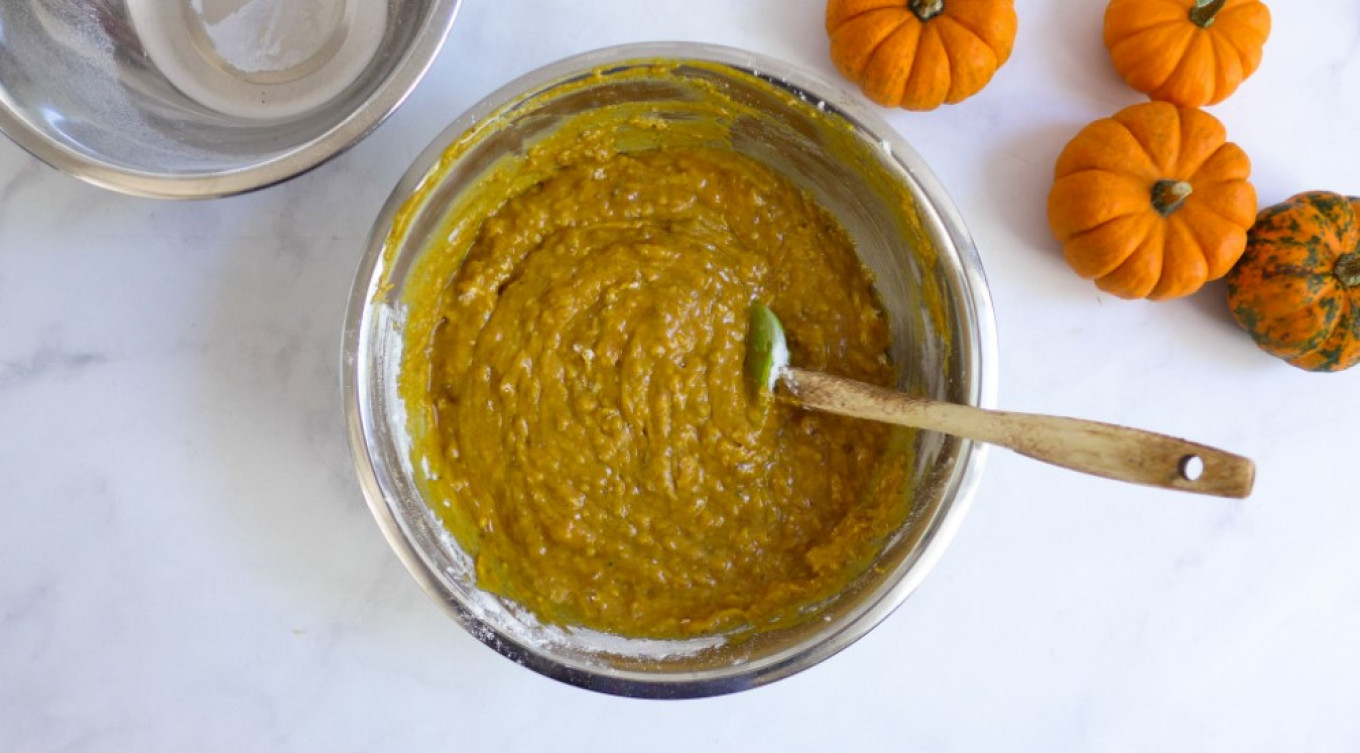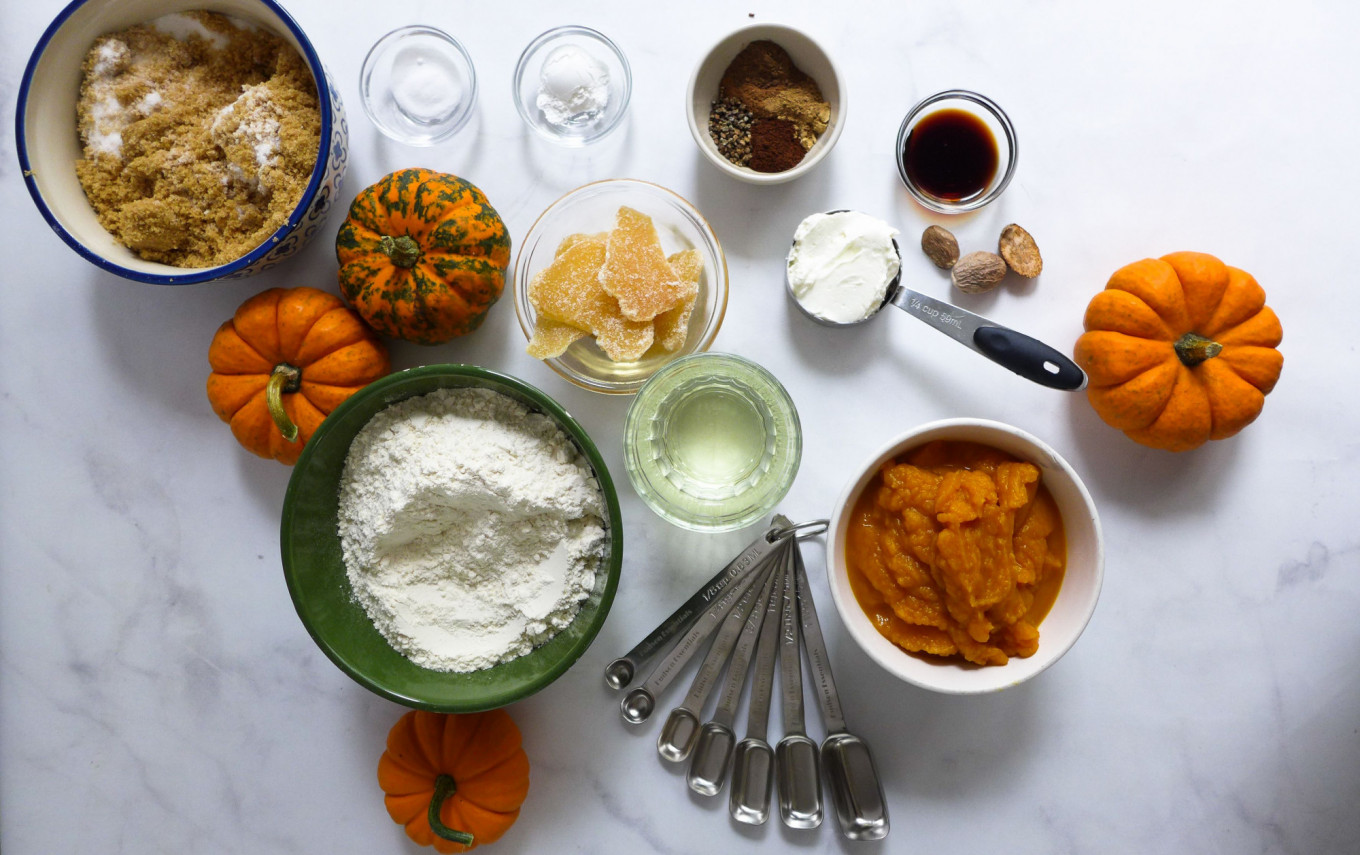I don’t go berserk over pumpkin season. I like my latte as God intended it: free from cloyingly sweet pumpkin spice syrup, and while I appreciate a well-crafted creamy pumpkin soup with frizzled sage, I’d just as soon have a bowl of borshch. And this blasé attitude towards the most famous member of the gourd family is well suited to Russia, where the pumpkin has yet to inspire seasonal frenzy, at least among those who live outside the metropolitan Starbucks belts.
I’m not sure what accounts for this lackluster attitude towards pumpkins. Pumpkins are certainly a major crop in Russia, and Russians have survived for centuries thanks to cellars filled with hardy root vegetables like pumpkins. And Russians find them decorative: the country’s many harvest festivals are traditionally festooned with pumpkins —this paper reported a display of massive pumpkins in the Moscow just last week. Each autumn in the food markets of Russia, pumpkins take center stage, though to the despair of American expat parents, they are usually hacked into quarters, making them entirely useless for a pumpkin’s primary use in late October. Fast forward to mid-November, and the usual deluge of messages will clog up my inbox from frantic first timers to Moscow wondering where they can find tins of ready-made pumpkin pie mix. I keep a PDF on my desktop with simple instructions on how to make pumpkin puree from scratch, which I send along as meagre compensation for the unhappy news that, alas, pumpkin pie mix is almost impossible to find in Moscow.
Despite the omnipresence of pumpkins in autumn, open any Russian cookbook to the “P” section of the index (or in Russian the “T” section: the word “тыква” does triple duty to define “pumpkin,” “squash,” and “gourd”) and you will find very slim pickings indeed. Pumpkin kasha is far and away the most popular dish in Russia, with pumpkin pancakes running a very distant second. Pumpkin soup gains prominence during Great Lent, but this falls in early spring rather than mid-autumn.

The former Soviet republics are more creative in their use of pumpkins: the Balts pickle their pumpkins — often inside the pumpkin itself, which is picturesque as well as delicious, and they also use pumpkin flesh to make quite delectable savory buns. The Central Asians parlay pumpkin into plov (try saying that ten times fast), and the Caucasians combine pumpkin, squash, and other gourds with game and lamb in the classic sweet-sour pairings that are a hallmark of that mountainous region’s cuisine.
Perhaps the reason that pumpkin has failed to reach iconic status in Russia is that Russians tend not to use it in sweet baked goods, which even I will admit is where pumpkin has the potential to truly shine, given the right conditions. Pumpkin-based baked goods such as pumpkin scones, bread, cakes, muffins, and cheesecakes are so appealing and addictive not because of the mildly flavored pumpkin flesh, but for the always-irresistible spice combination of cinnamon, cloves, allspice, nutmeg, ginger, and cardamom that make pumpkin confections so delicious, and fill the house with the tantalizing odor of seasonal spices. And that is something to get excited about.
This week, I took advantage of the glut in pumpkins at the market to make a batch of pumpkin puree for the freezer; in Moscow anyone who can magic up a pumpkin pie will always be the heroine of the expat Thanksgiving. Freezer space being limited, I ended up with more puree than I needed, and put the spice theory to the test, with one of the humbler baking projects imaginable: pumpkin bread. This can be truly awful or divine and if you want divine, you have to turbo-charge the spices and make the texture moist and cakey rather than dry and crumbly. I based the recipe below on a failsafe recipe from The New York Times, that nails the right consistency of a moist cakey crumb and a slightly chewy exterior: the perfect compromise between cake and bread. The spice additions are my own, as is the glaze, which is optional, but I love the contrast of the acidic tang of the sea buckthorn with the milder underpinning of the pumpkin, spiked with the bright notes of the riot of autumnal spices.
One slice of this bread puts even me into an autumnal “pumpkin spice” mood at any time of the day or night: this pumpkin bread is the perfect accompaniment to morning coffee, afternoon tea, or late-night glass of milk… or even something stronger. Give it a try, while pumpkins are still omnipresent!

Spicy pumpkin bread with sea buckthorn glaze
Ingredients
For the bread
- 2 ½ cups (315 grams) all-purpose flour
- 1 teaspoon baking powder
- 1 tsp kosher salt
- 1 tsp baking soda
- 1 tsp cinnamon
- ½ tsp freshly ground nutmeg
- ½ tsp ground cloves
- ½ tsp allspice
- 1 tsp cardamom seed, crushed
- ½ cup (120 ml) vegetable oil
- 1 cup (200 grams) white sugar
- ¾ cup (165 grams) light brown sugar
- 2 eggs, at room temperature, whisked together
- 2 ⅛ cups (425 grams) pumpkin puree made from half of a medium-sized pumpkin or one small pumpkin (or roughly 1 kilo or 2 pounds of pumpkin).
- ¼ cup (62 grams) Greek yogurt
- 2 Tbsp bourbon or dark rum
- ⅔ cup (110 grams) candied ginger, finely minced
- Baking spray or 1 Tbsp of butter to grease the loaf pan
For the glaze
- ⅔ cup (112 grams) frozen sea buckthorn berries
- 2 Tbsp white sugar
- 2 Tbsp milk
- ½ tsp salt
- 1 cup (120 grams) confectioners’ sugar
Instructions
Make the pumpkin puree
- Preheat the oven to 450ºF (230ºC). Line a baking sheet with parchment paper.
- Cut the pumpkin into eighths and cut or scoop out the seeds and stringy bits. Brush the pumpkin lightly with vegetable or olive oil and roast for 35-40 minutes until the flesh of the pumpkin can be pierced easily with a knife.
- Cool the pumpkin to room temperature, then remove the rind.
- Mash the pumpkin flesh as you would potatoes, or whizz it in the food processor for a smoother texture.
- Store in an air-tight container until you are ready to use it or freeze it for up to three months.
Make the pumpkin bread
- Preheat the oven to 350ºF (180ºC). Spray a 9 x 5-inch (1.9 liter) loaf pan with cooking spray or butter it. Cut a parchment paper sling to line the width of the pan with several inches to hang over the sides; this will help you ease the bread out of the loaf pan when it is cooled.
- Sift together the flour, baking powder, baking soda and salt into a mixing bowl. Add the spices and whisk together to combine.
- Whisk together the eggs and oil, then add the pumpkin puree, bourbon or rum, both sugars and the Greek yogurt. Whisk until smooth.
- Fold the dry ingredients into the wet with a spatula, handling as gently as possible until all the ingredients are combined. Do this by hand rather than a mixture to avoid over processing. Fold in the candied ginger at the end. Pour the batter into the prepared loaf tin.
- Bake for 75-85 minutes until the top of the loaf springs to the touch and a skewer tests clean or with a few crumbs attached. Cool for 30 minutes on a cooling rack in the loaf tin. Lift the bread out of the tin with the parchment sling and use an offset spatula if it is stuck at the ends. Allow the bread to cool another 25-30 minutes before glazing.
- While the cake is cooling, make the glaze. Combine the frozen sea buckthorn* berries with the granulated sugar in a saucepan and cook over medium low heat until the berries dissolve and a thick syrup forms. Pass the mixture through a fine-mesh sieve and cool to room temperature. Store in an airtight container until use.
- When the bread is completely cool, whisk together 3 tablespoons of the sea buckthorn syrup with the confectioners’ sugar, milk, and salt. Place the loaf on a cooling rack set over a baking sheet and glaze it. Wait for 10 minutes before serving.
Pumpkin Bread adapted from a recipe in The New York Times.
*Sea Buckthorn berries (ягода облепихи) are easy to find in Russia, particularly frozen. Russian stores abroad also tend to stock them in the freezer section. If you can’t get ahold of them, substitute orange juice for the syrup and the milk.

A Message from The Moscow Times:
Dear readers,
We are facing unprecedented challenges. Russia's Prosecutor General's Office has designated The Moscow Times as an "undesirable" organization, criminalizing our work and putting our staff at risk of prosecution. This follows our earlier unjust labeling as a "foreign agent."
These actions are direct attempts to silence independent journalism in Russia. The authorities claim our work "discredits the decisions of the Russian leadership." We see things differently: we strive to provide accurate, unbiased reporting on Russia.
We, the journalists of The Moscow Times, refuse to be silenced. But to continue our work, we need your help.
Your support, no matter how small, makes a world of difference. If you can, please support us monthly starting from just $2. It's quick to set up, and every contribution makes a significant impact.
By supporting The Moscow Times, you're defending open, independent journalism in the face of repression. Thank you for standing with us.
Remind me later.







